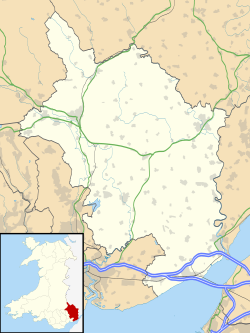| Church of St Michael, Llanfihangel-tor-y-mynydd | |
|---|---|
| Church of St Michael | |
 "an attractive and well preserved medieval church" | |
| 51°42′46″N2°46′38″W / 51.7128°N 2.7772°W | |
| Location | Llanfihangel-tor-y-mynydd, Monmouthshire |
| Country | Wales |
| Denomination | Church in Wales |
| History | |
| Status | Parish church |
| Founded | C14th-C15th century |
| Architecture | |
| Functional status | Active |
| Heritage designation | Grade II* |
| Designated | 19 August 1955 |
| Architectural type | Church |
| Style | Perpendicular |
| Administration | |
| Diocese | Monmouth |
| Archdeaconry | Monmouth |
| Deanery | Monmouth |
| Parish | Llanfihangel Tor-y-Mynydd with Llangunnog |
| Clergy | |
| Vicar | The Reverend J M Bone |
The Church of St Michael, Llanfihangel Tor-y-Mynydd, Monmouthshire is a parish church with its origins in the 14th or 15th century. A Grade II* listed building, the church remains an active parish church.
